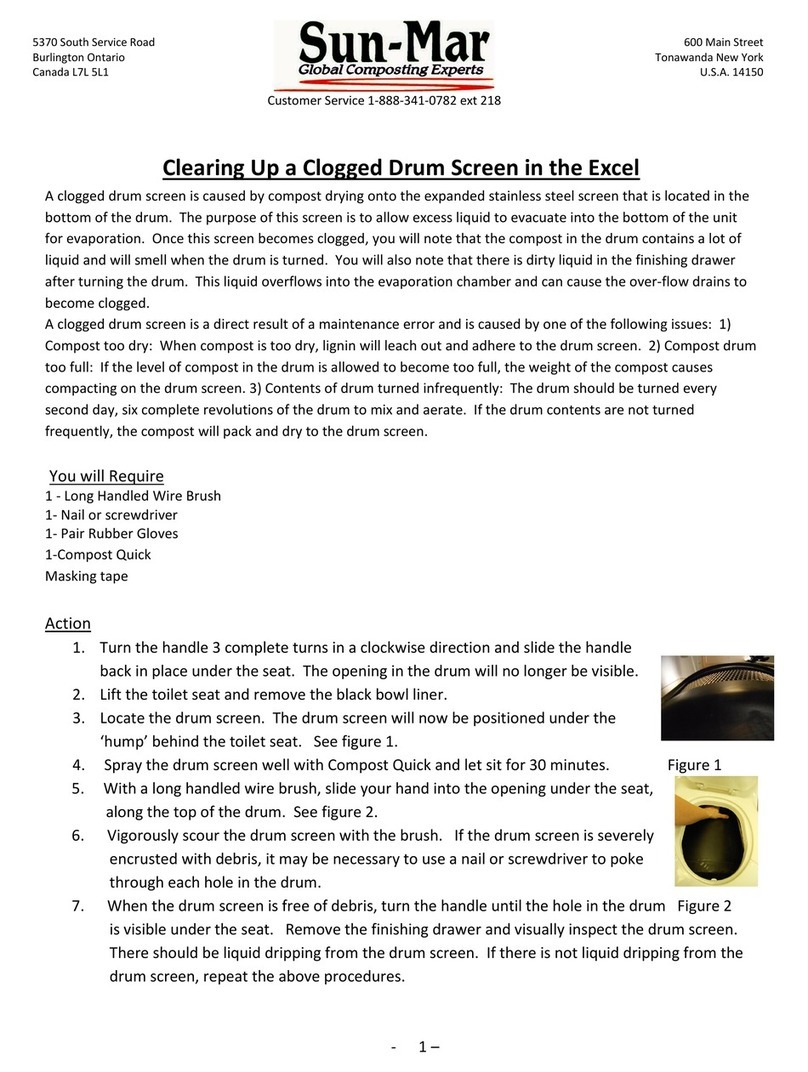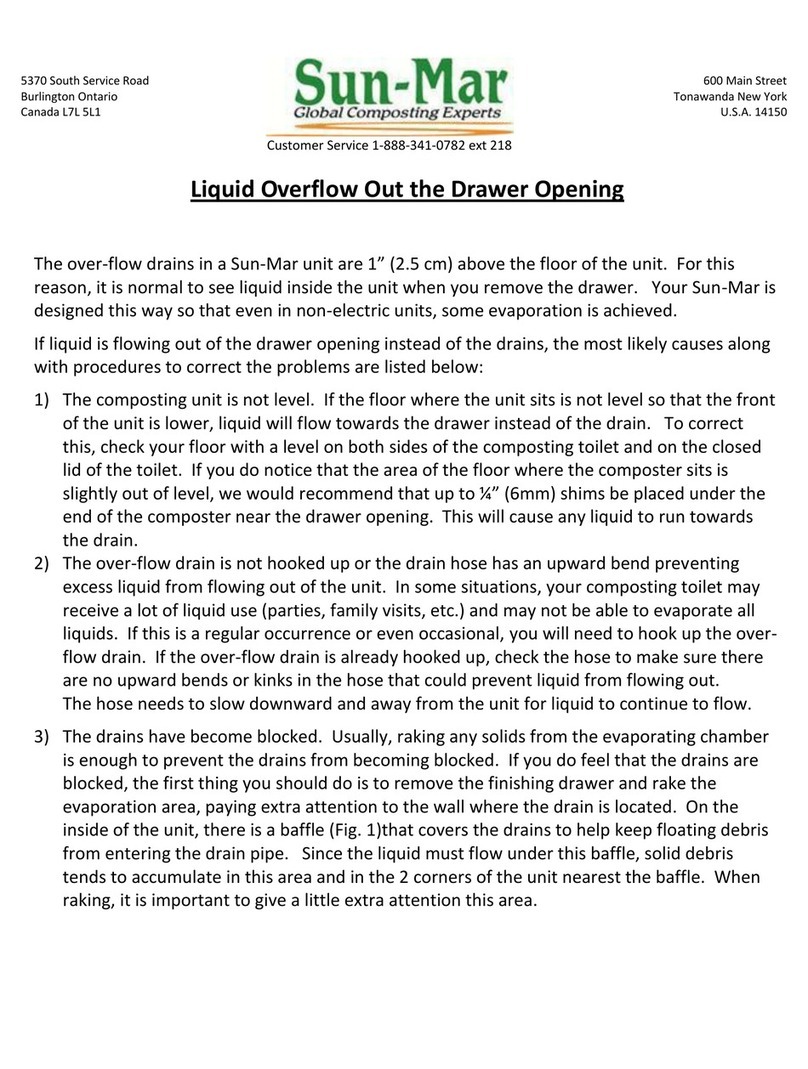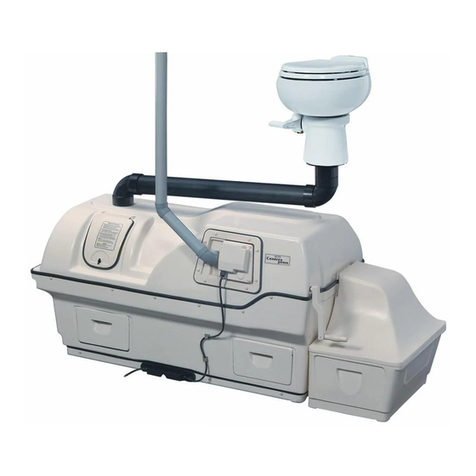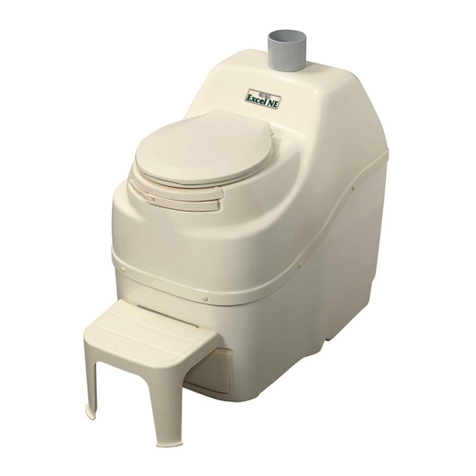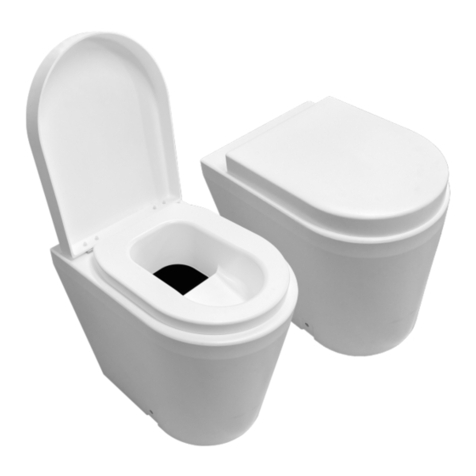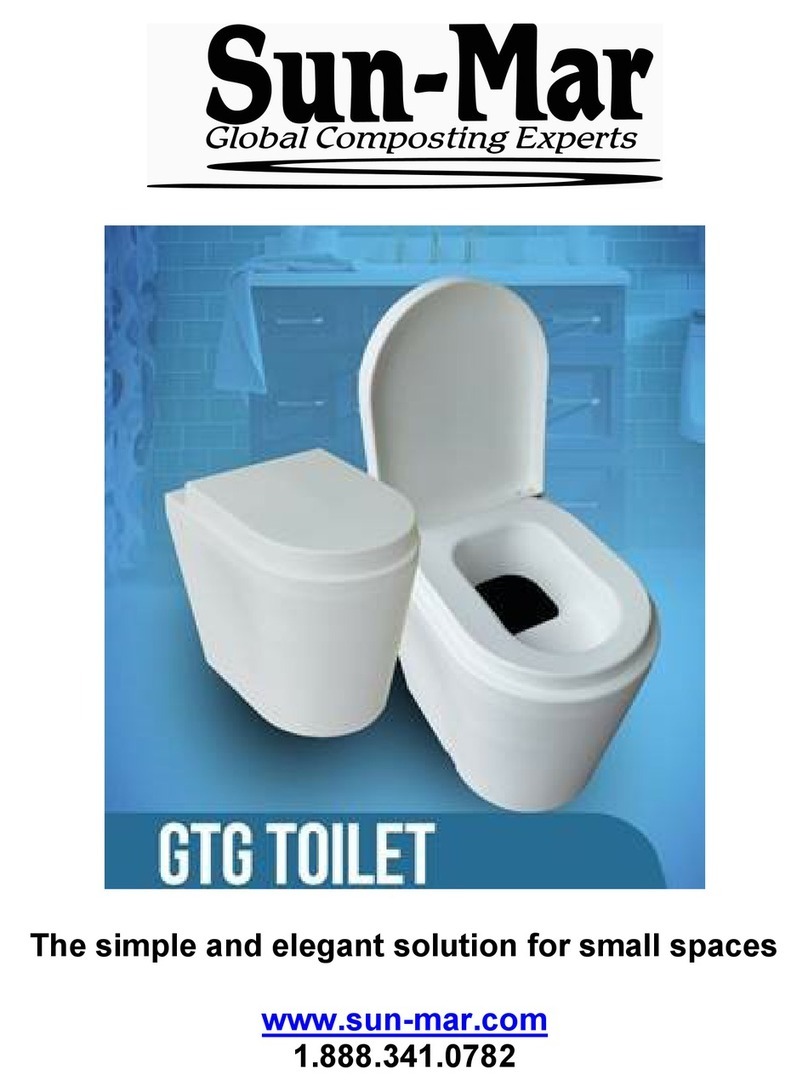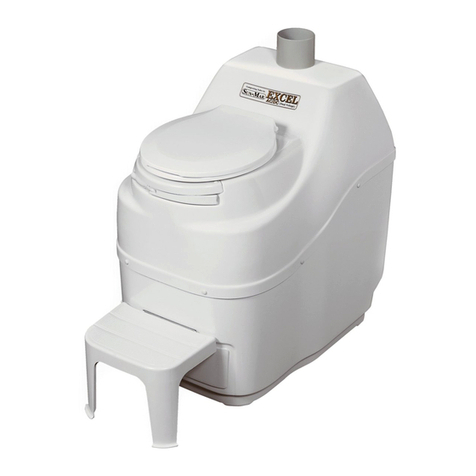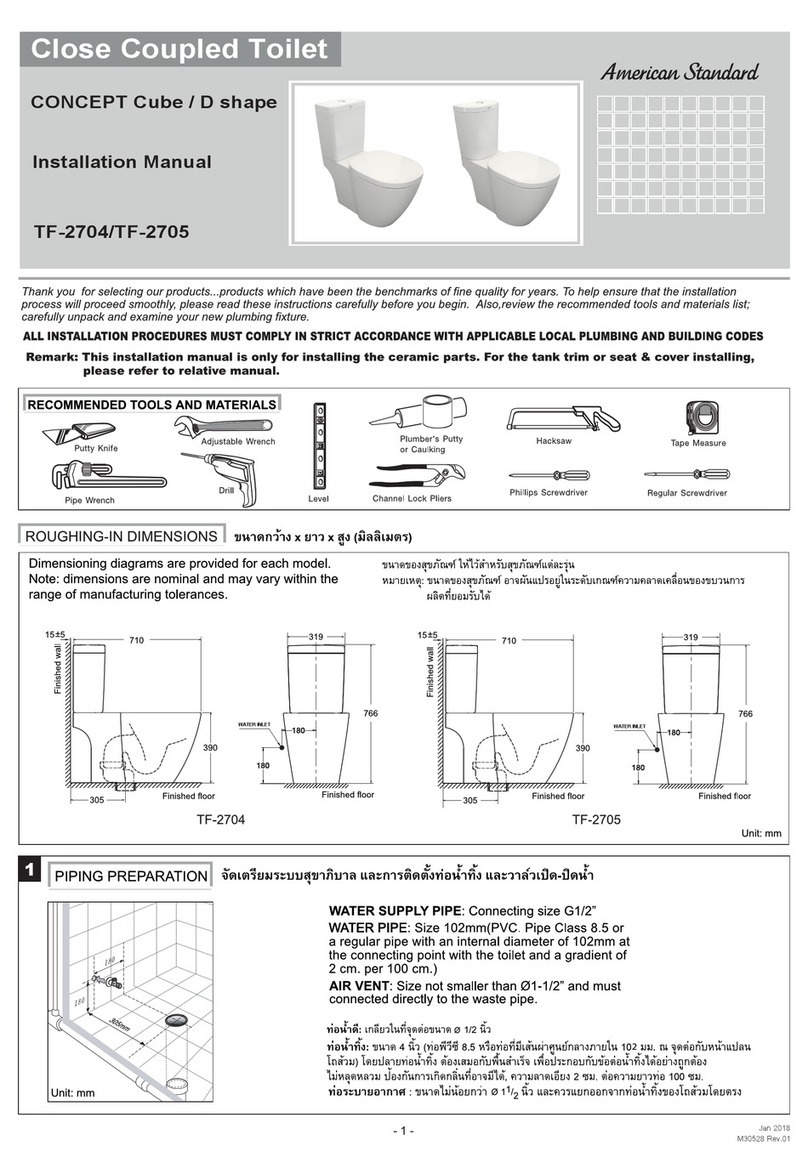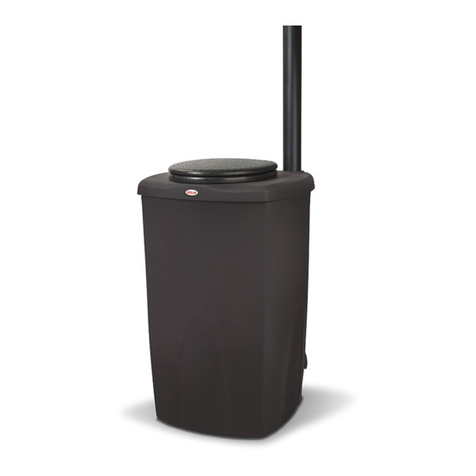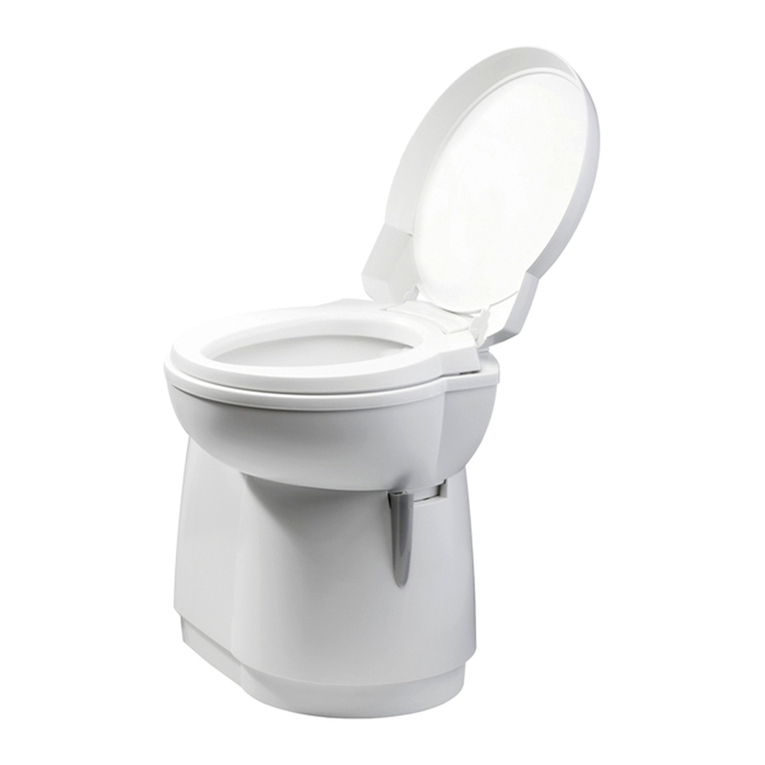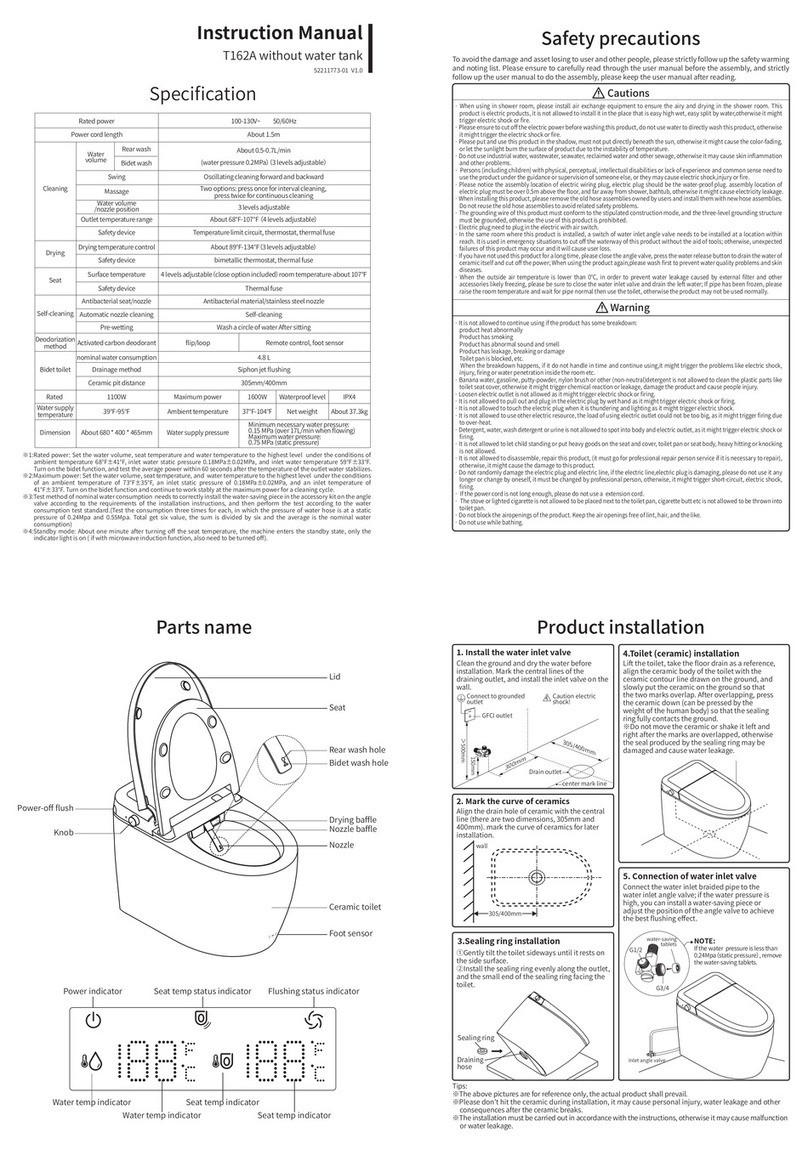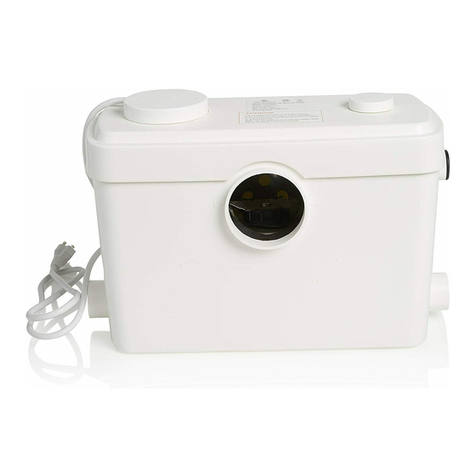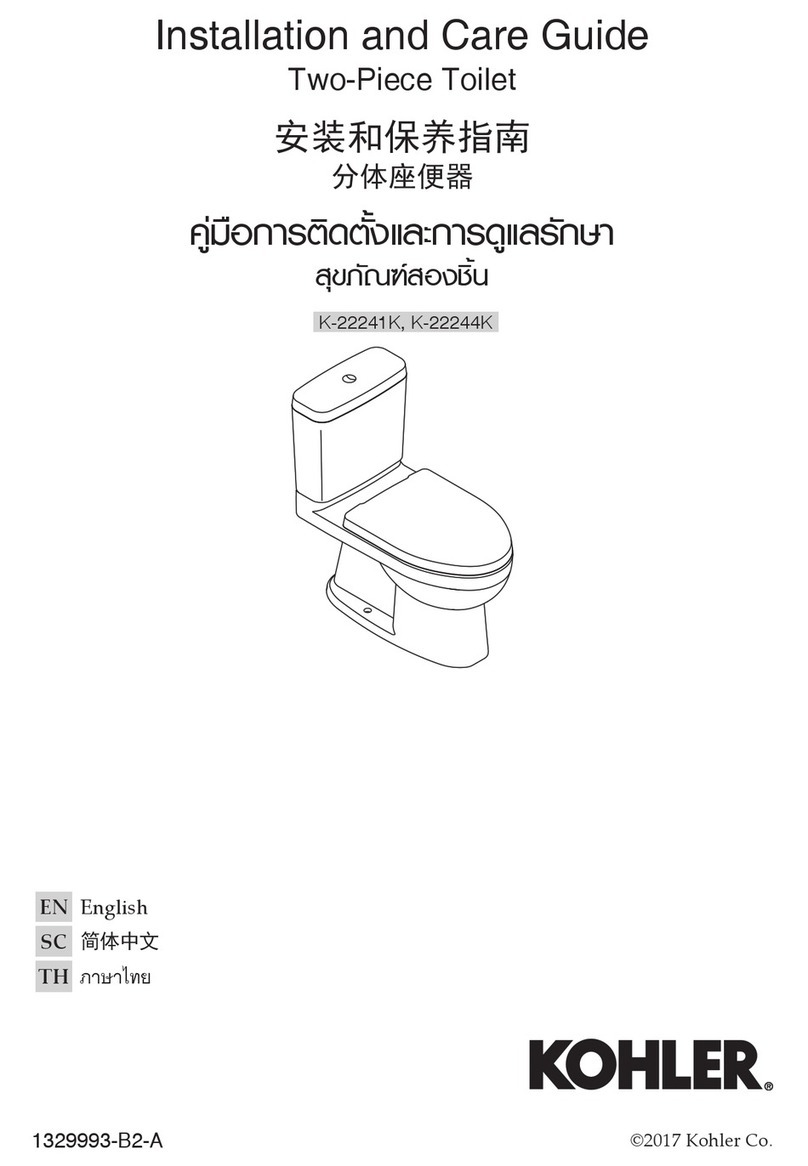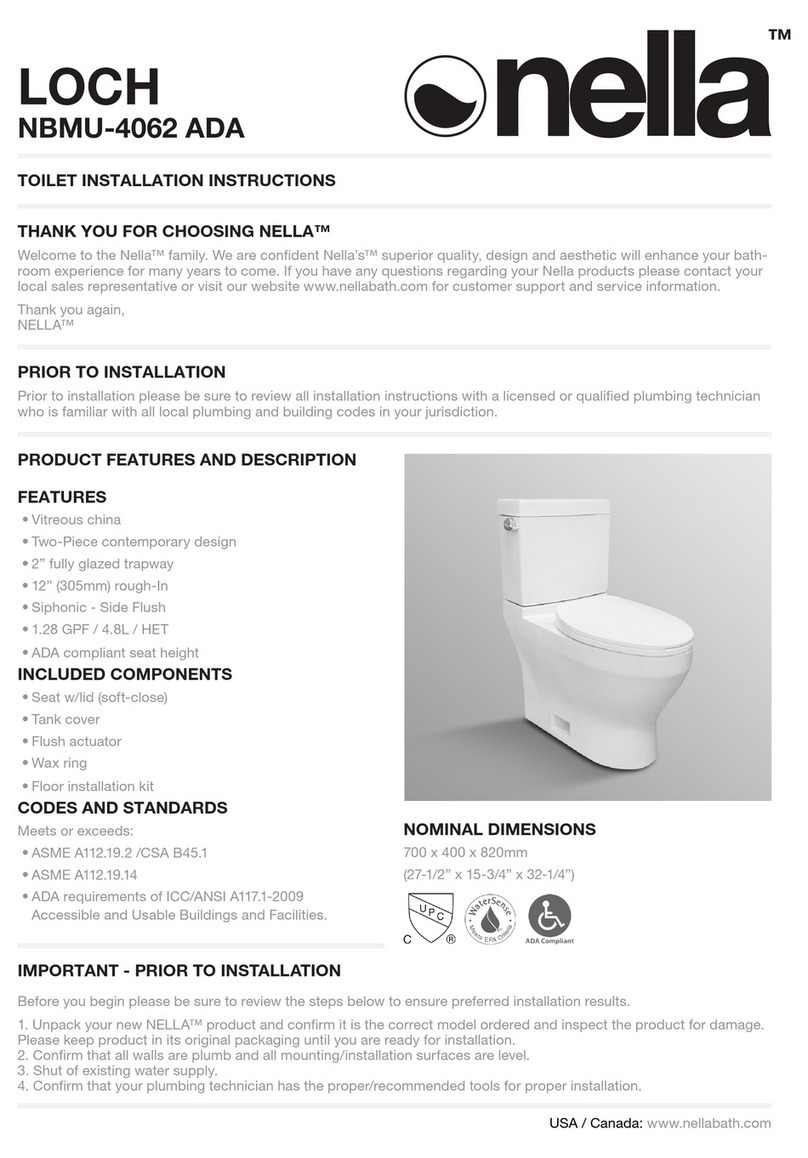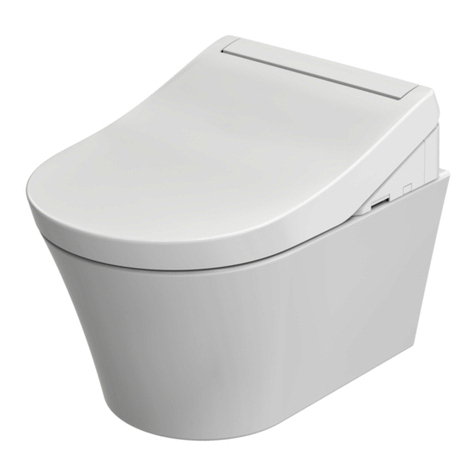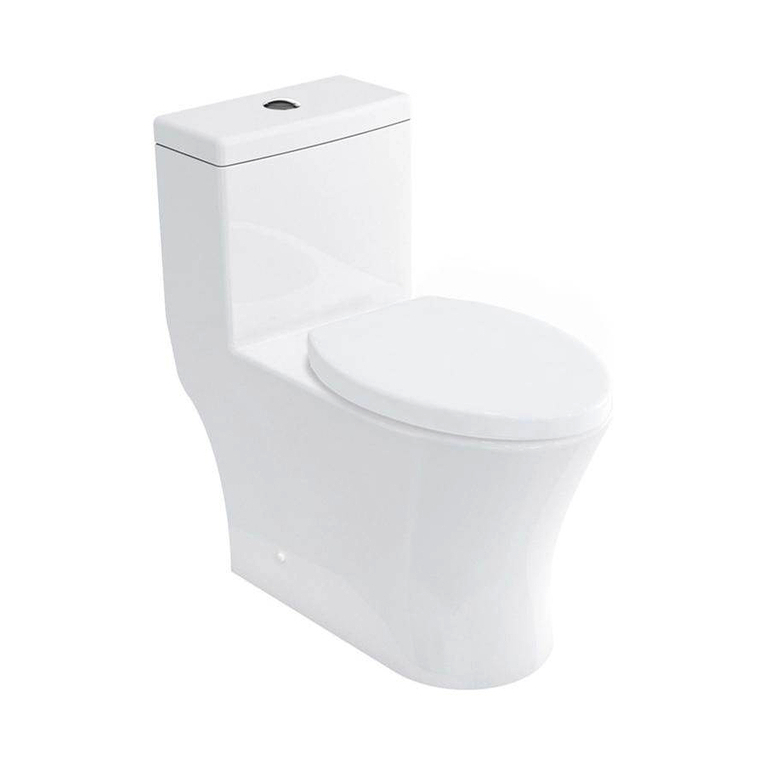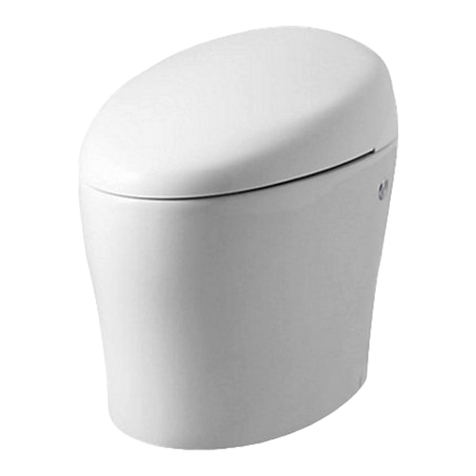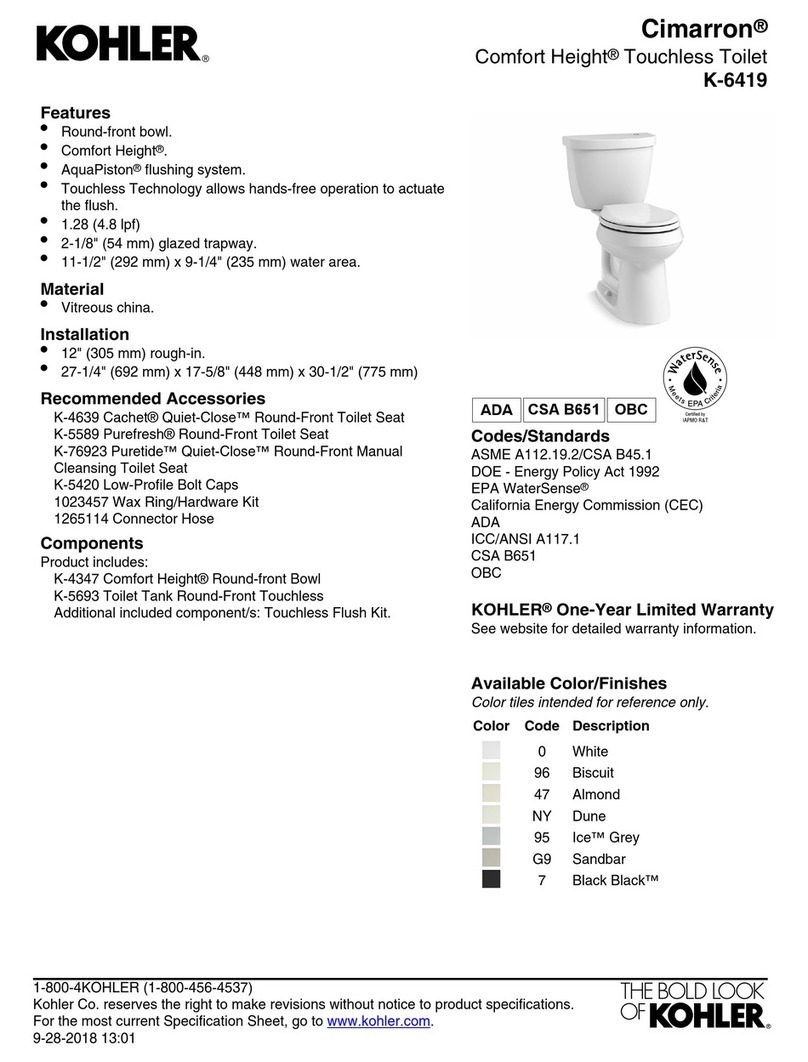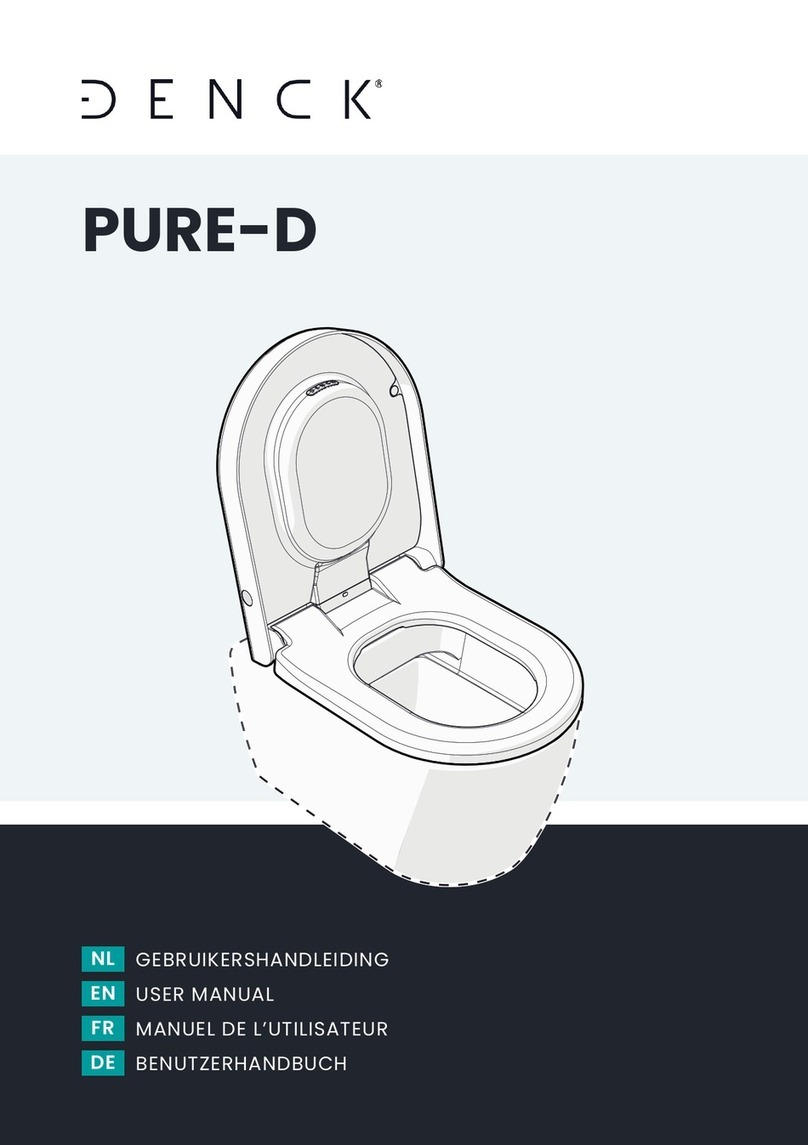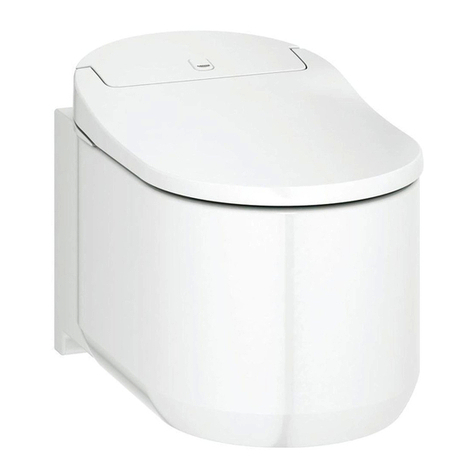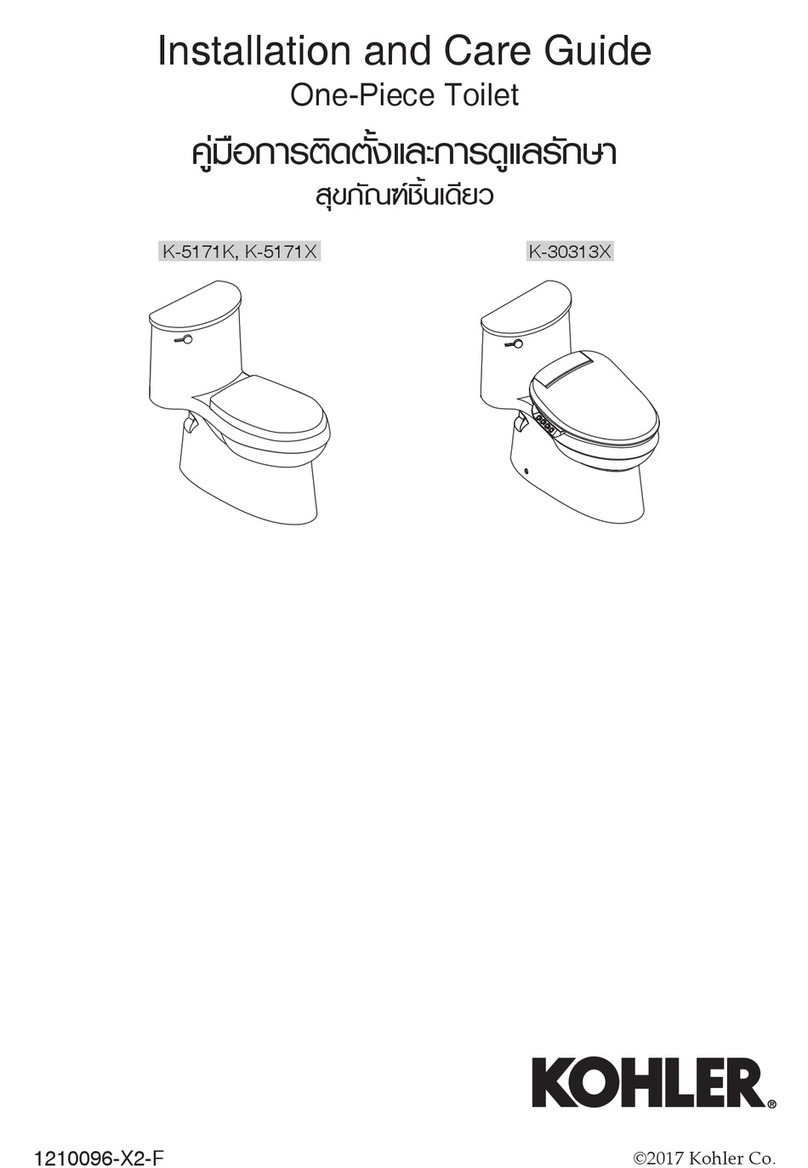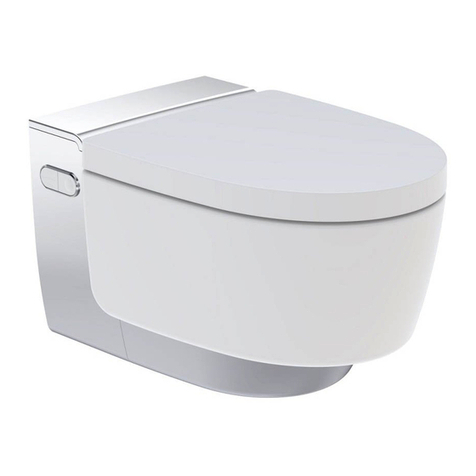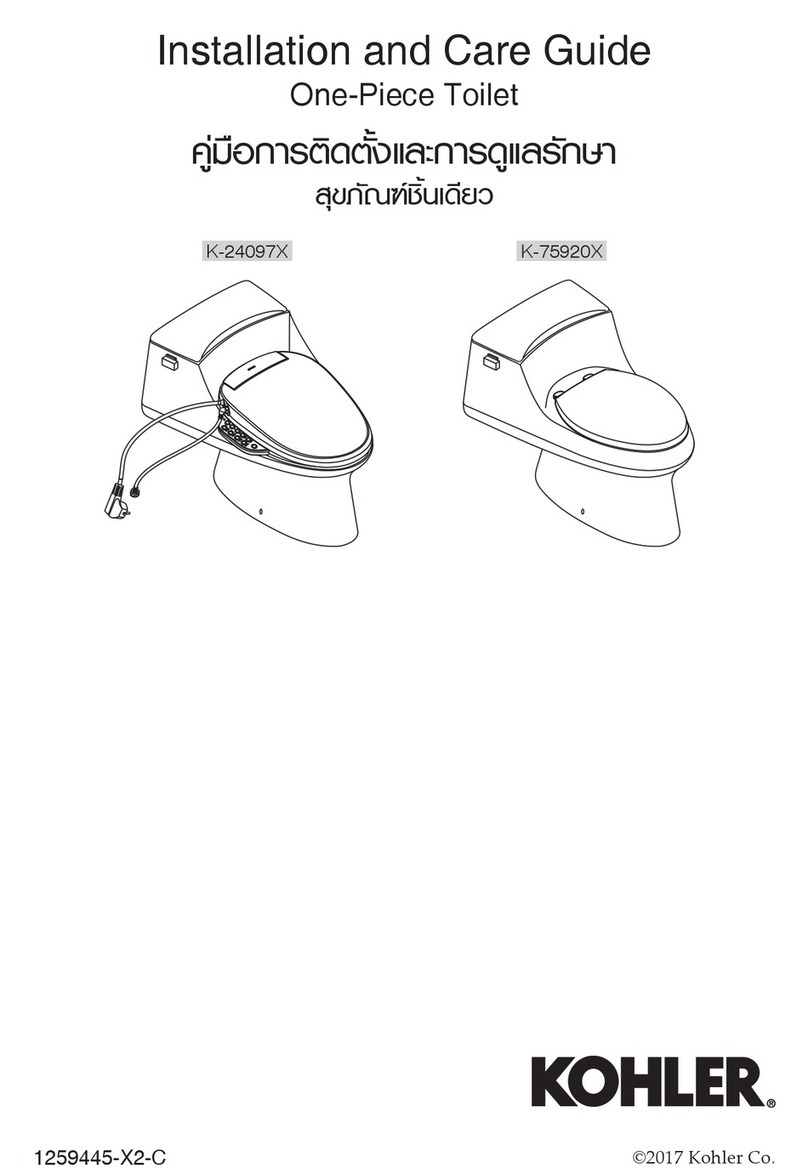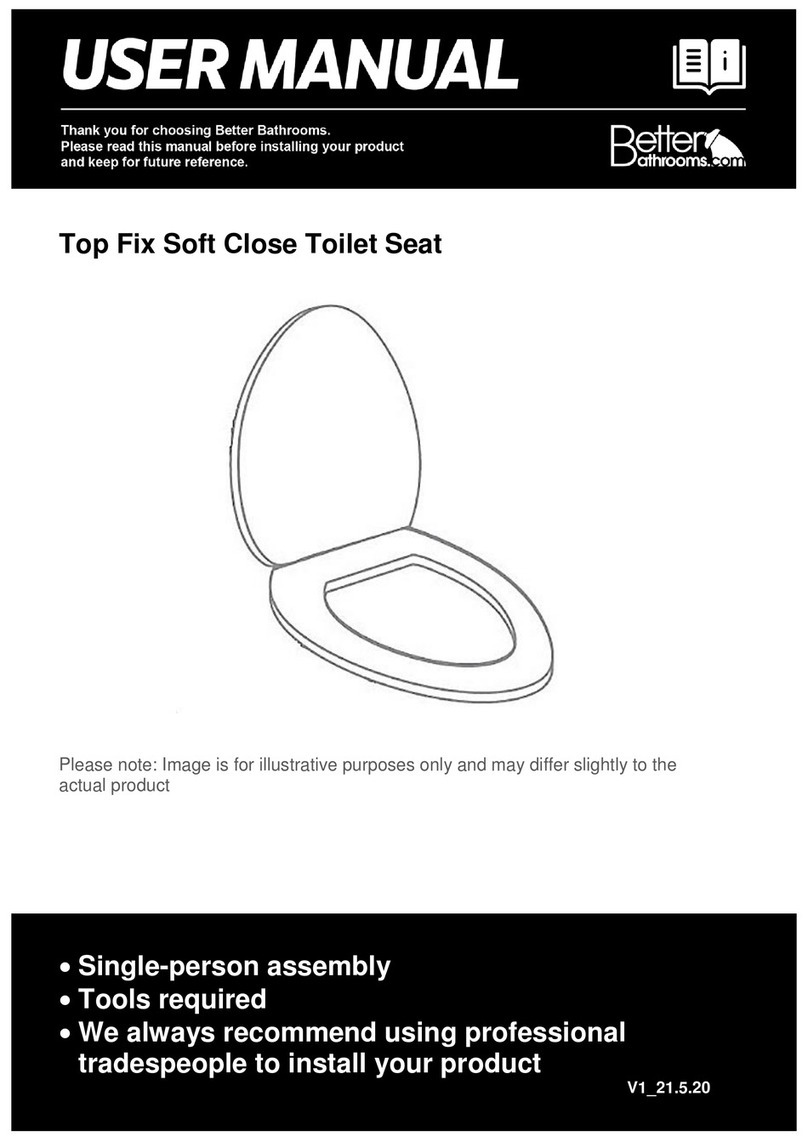
1An unpleasant smell may be detected only where there is a bad compost (See "Trouble Shooting
your Compost") and then only when there is poor air flow such that insufficient air is being
sucked into unit.
-16-
Symptoms Possible Causes Remedies
POOR
AIR
FLOW
THROUGH
UNIT
Unit is in an air-tight
location and the fan
cannot pull air in.
Provide air supply.
Fan (110 Volt or 12V)
has failed. Remove the bowl liner and reach back to flick the 110V fan
blades. Remove and try the same thing with the 12 V fan. If
this does not restart the fan, then the fan should be replaced.
Instructions are included with the replacement fan.
Device other than Sun-
Mar diffusor is installed. Your device may be discouraging air movement. If so,
replace with a Sun-Mar diffusor.
Sun-Mar diffusor iced
up. Diffusor is probably not needed in winter. Remove until
spring.
Vent has a water trap
where condensation is
collecting and causing a
partial or total blockage.
Re-install the 2" vent so there are no longer any low points
where condensate can collect. If re-installation is not possible,
drill a small hole in the bottom of the low point (preferably
outdoors) to allow condensate to drain. (Note; watch for icing in
winter).
2" vent stack has too
many bends and/or
horizontal lengths, or 4"
vent stack is not straight
enough.
1. Re-install the 2"vent stack to reduce number of bends/
excess horizontal lengths, or straighten 4" vent.
2. If the 2" vent stack cannot be further straightened,
remove the fan assembly and reduce the amount of
recirculating air by covering up the area between the fan
exhaust and the 90ovent intake elbow with duct tape or
similar. If 4" vent is not straight install a 12 Volt fan.
Blockage in stack Check air movement at top of stack. If very little, and other
possible causes eliminated, disassemble stack until blockage
found. Re-assemble, and/or insulate if blockage caused by ice
build up.
UN-
PLEASANT
SMELL
Vent stack is leaking at
joints or is broken. Make sure vent stack and fan assembly gaskets are air tight.
Seal joints/gasket with silicone to permit possible future
access. Vent joints away from the unit can be glued.
See "Poor Air Flow"
causes (above)1See "Poor Air Flow remedies (above).
Bad compost. See earlier section on "Trouble Shooting Your Compost".
-5-
rear, and the 4" vent from the top of the toilet.
The partial vacuum which the fan creates within
the toilet ensures there can be no smell.
Meanwhile, when the 110 Volt fan is not
working, the 4" vent stack acts like a chimney
on a wood stove to provide negative pressure
and prevent odors.
In the 110 volt mode, in addition to a fan, the
evaporation process is further assisted by a
thermostatically controlled heating element
located in a sealed compartment under the
evaporating chamber. This heating element
maintains warmth in the evaporating chamber,
and the indirect warmth also assists the
composting process.
A safety drain at the rear of the composter exits
from both left and right at the rear. These drains
are supplied plugged, but if the unit is to be used
heavily or without 110 volt electricity, one exit
should be connected to drain off any excess
liquid.
Start Up and Use
The "EXCEL AC/DC” requires little
maintenance. To start, put 3-4 gallons of peat
moss mix and a quart of rich top soil in the
drum, (or use Sun-Mar Microbe Mix), moisten
with warm water, and spray "Compost Quick"
into the drum and evaporating chamber under
the drawer. Thereafter, a cupful of peat mix
should be added after every bowel movement.
Although the peat mix included with the unit is
specially formulated for optimum performance,
regular peat moss may usually be used as an
acceptable substitute.
Every third day while the toilet is in use, the
drum should be rotated to mix and aerate the
compost. The drum should be given 4-6
complete revolutions, by turning the handle in a
clockwise direction (Seven turns of the
handle is required for each drum rotation).
To extract compost into the finishing drawer,
pull the drum lock, to enable the handle to
turn anti-clockwise and the drum clockwise.
The drum should be rotated at regular speed,
and as it does so the drum door remains open,
and compost drops automatically into the
finishing drawer.
While it is entirely up to the user, we suggest
that under normal conditions electricity can be
disconnected if the toilet is not going to be
used for over a week.
Winter Use
Because "Sun-Mar" units are made of
fibreglass and high grade stainless steel;
freezing temperatures will not damage the
toilet. Composting action, however, decreases
as the temperature drops, so for extended
winter use attempts should be made to try and
keep the toilet above 60oF (15oC) if possible.
The vent stacks should be insulated to
minimize condensation in the pipe and avoid
ice blockages.
If the toilet is in an unheated space and 110
volt electricity is avaialable, it may be
necessary to keep the toilet plugged in, install
a fan speed control on the toilet so that the fan
is drawing in very little air, and put a blanket
over the toilet.
For periodic use in winter, even where the
compost in the drum is frozen, if there is
enough room in the drum, the toilet may be
used as a “holding tank”, until the compost
warms up and the microbes emerge from
dormancy.

